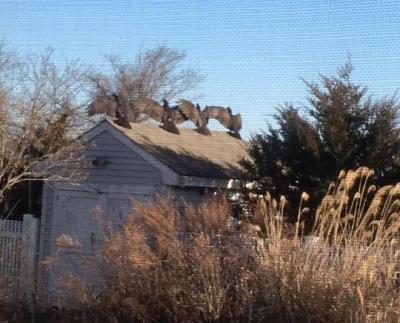Mild winter increasing vulture sightings in Dartmouth
Lately, an unusual group has been the talk of the town in Dartmouth: Vultures, which seem to be all over the place.
Vultures are scavengers, and feed on carrion, so they are often spotted by farmland or along highways. According the Cornell Lab of Ornithology, the key identifying features of turkey vultures are their red, bald heads and their wobbly flight. Turkey vultures use their strong sense of smell to find carrion.
Jamie Bogart, a research associate at the Lloyd Center, said that the birds are here year round, but they might be more visible because of the weather. There are also some turkey vultures from further north who come to the South Coast for the winter.
“Maybe because of the slow start of the snow season they’re out and about a bit more,” Bogart said. When snow covers the ground, it makes it harder for the vultures to find food.
Turkey vultures roost in trees across the landscape, and have been spotted in groups of up to 20 or 30, although it is not unusual to spot the birds alone or in pairs.
“If they’re feeding, you’ll often see more in a flock,” Bogart said. A deer carcass in an open area, for example, might draw a crowd of vultures.
Another vulture species that can be spotted in town is the black vulture, which has a bald black head and broader wings than the turkey vulture along with a short tail and silver wing-tips, according to the Cornell Lab. Black vultures don’t have a good sense of smell, so they follow turkey vultures to food sources.
Dartmouth Week would like to hear about your birding and wildlife spotting adventures. Seen something exciting? Email reporter@dartmouthweek.net for a chance to be featured online or in print.














